The Road Goes Ever On - My Metal Journey So Far (Part 2)

| Written by: | F3ynman |
| Published: | June 08, 2024 |
Two years ago, I reported about the history of my metal exploration with an article showcasing 30 albums that were influential to my developing music taste. The first part of my journey took me from classic heavy metal bands (Judas Priest, Dio, Iron Maiden) to the founding fathers of thrash (Metallica, Megadeth, Slayer), through titans of death metal (Death, Entombed, Autopsy) to the gods of black metal (Dissection, Necrophobic, Emperor). After dipping my toes in some doom, progressive, power, and the beginnings of post metal, I believed that I had successfully speed-run through everything that metal music had to offer. But, to my great satisfaction, I soon realized there was much, much more. More to be discovered, more to be experienced, more to bang my head to.
Today marks my third anniversary of being a Metal Storm user. I've now been delving for over five years in the metal universe, and I don't plan to stop anytime soon. In this article, I will present the albums that have influenced me the most these past two years since I published that first anniversary article. In order to maintain some sort of coherence and structure, I have organized the albums by their genre. In each genre section, I will go in the chronological order in which I discovered the albums.
Whether it means revisiting an old classic or discovering something entirely new, I hope that my words will inspire you to give each of these albums a listen! So, without further ado, let's dive right in!
Songs for the Dying and Songs to Die for: Doom Metal
My previous encounters with gothic metal were rather brief and not all that impressive for me. Paradise Lost’s Draconian Times had some good songs, but ended up being too frontloaded; Moonspell’s Irreligious was alright, although I vastly preferred their early black metal days; and Type O Negative’s Bloody Kisses was a strange mixed bag of quality. Then I stumbled upon Virgin Black’s Sombre Romantic, and I instantly fell in love with its incredible gothic doom style. On the one hand, there is so much pure beauty on display with Rowan London's operatic singing, his delicate piano playing, and Samantha Escarbe’s elegant guitar solos. But, on the other hand, there's also so much palpable suffering and darkness with all those agonizing cries and fierce, chaotic riffing. I just absolutely adore the diversity and flexibility in their approach, being able to effortlessly go from playing angelic, gothic symphonies to producing badass, demonic black metal within the same song.
While Sombre Romantic creates the greatest contrasts between the bizarre and the beautiful tracks, Virgin Black’s next album titled Elegant… And Dying provides a more focused and mature approach, creating a truly awe-inspiring and worthy successor. Both of these albums share a great collection of highlights, but the ones I treasure the most are “Drink The Midnight Hymn” with its headbang-inducing main riff, “Lamenting Kiss” with its mix of melancholic guitar and fist-pumping percussion, “Velvet Tongue” with those amazingly anguished vocals (“Look at my face! Look at God in my eyes!”), and the 17-minute-long definition of epicness: “The Everlasting” with its chilling lyrics “The faceless haunts me”, ominous choirs, intricate piano playing, and a super satisfying climax of frenzied, blackened riffs. Despite Virgin Black’s famous and very impressive orchestral Requiem trilogy, their first two albums occupy a special place in my heart and will remain among my favorites for some time.
Cherno marked one of the first times that I enjoyed an album that wasn't sung in either of my native languages (English and German). Kypck showed me that I didn't need to understand the Russian words to feel the intense emotions behind the melodic yet menacing singing. The instrumentation on this debut album is extremely varied, ranging from the unsettling whining guitars and thunderous droning on “The Black Hole” to the bouncy anthem of “Stalingrad” and the morose “Demon”. It's also a perfectly structured album, starting with an eerie instrumental track, before one is steamrolled by the crushing riffs of “Christmas in Murmansk”. And, if you turn up your volume high enough, you'll even pick out sounds of men playing Russian Roulette at certain times throughout the album.
Their next installment, Nizhe, didn't disappoint either, presenting a series of phenomenal songs such as “Alley of Stalin”, “Rupture”, and “Comrades” that I recommend to any fan of destructive doom. Sadly, just as I was beginning to get into their discography, the band began to distance themselves from Russian associations due to the war in Ukraine, culminating in an announcement of the end of Kypck as it currently exists. Even if they still return in some shape or form to play doom metal of a similar style, it surely won't be quite the same without the beautiful melancholy and ominous contempt conveyed so elegantly by Kypck’s Russian vocals.
For me, heaviness means slow, steady, and absolutely crushing. And practically nothing compares to the sensations of being hit by the riptide of the rolling sonic waves of Ahab’s doom on their debut album. As one journeys along with Captain Ahab's crew across stormy seas, the vocals seem to get progressively lower pitched in their delivery, reaching a baffling depth on the last track—especially with the subterranean utterance of “Moby Dick”. The bright lead guitar tunes and keyboard melodies contrasts with the megaton heaviness of the rhythmic riffs. The drum beats from the deep, performed at a consistent marching pace, are patient yet uncompromising, just like the ebb and flow of the ocean. It's an empowering experience whenever I go on a walk while listening to this album, my footfalls matching every inevitable drum beat.
There is little in doom that can touch, let alone top, this behemoth. It's not just a gripping tale of revenge—a desperate hunt for a monstrous foe. It's an oppressive experience that eerily conveys the fear of the unknown expanses of the sea, all the while blanketing the listener in a crushing aural tsunami. In every song, the musicianship builds up all of this anticipation, before delivering on the promised pay-off in an extremely satisfying style. This is how funeral doom must sound like. And, while I did go on to enjoy some Lovecraft-inspired funeral doom of Tyranny and Catacombs, I have yet to listen to a doom album that can surpass The Call Of The Wretched Sea.
Despite initially enjoying many albums by melodeath bands such as In Flames, Dark Tranquillity, and Be'lakor, I quickly found myself becoming somewhat numb to the genre, failing to find melodeath albums that truly amazed me anymore. I experienced a similar phenomenon in the melodic death doom scene. Bands like Anathema and Paradise Lost, except for a couple of songs, couldn't really get me hooked, while My Dying Bride were certainly more enjoyable, but were not all too extraordinary in my opinion.
My interest for this form of melodic doom was revitalized by Katatonia’s Brave Murder Day. The ever-permeating melancholy, the magical riffs, and, of course, Mikael Åkerfeldt's beautifully menacing growls fill me with awe every time I give this album a spin. While I prefer the interplay of deep vocals, heavy riffs, and eerie lead guitar melodies on songs like “Brave” and “Endtime”, I've also become fond of the unexpectedly dreamy and almost psychedelic track “Day”. Other melodic doom albums I came to appreciate are Katatonia’s Dance Of December Souls and Estatic Fear’s Somnium Obmutum. But, as it stands, in terms of balancing beautiful melody and heavy melancholy in death doom, I don't think Brave Murder Day can be topped.
Insert “Sweet Leaf” Coughing Noises Here: Stoner Rock / Stoner Metal
After exploring some gothic doom, Soviet doom, funeral doom, and melodic death doom, it's time to turn to another doom-adjacent genre: stoner, where the guitar riff reigns supreme!
When searching for inspiration, we often look to old classics that were the first to establish a certain style. Yet, I've found myself also being influenced by new releases such as Lucifer's Fall’s 2021 album, which acted as the impetus for my doom metal expeditions (see my first article). Similarly, while I absolutely adore Black Sabbath’s timeless Master Of Reality, it was Black Sky Giant’s 2022 album that really motivated me to dive deep into the exploration of stoner rock.
End Of Days Pilgrimage is composed of six purely instrumental tracks. Like the lumbering footfalls of a giant, the fuzzy guitars play undulating, mesmerizing riffs. The music flows so seamlessly and in such a seemingly effortless way, creating a psychedelic instrumental backdrop that's left to be filled by my wandering imagination. My mind journeys to distant planets of green skies and ancient ruins, explores mysterious desert cults, and takes a pilgrimage across barren desert sands.
Another recent release that sparked my interest in stoner doom was Green Lung’s 2019 album Woodland Rites. Listening to that record and being hit with its lively vibe, intriguing occult lyricism, and incredibly fun melodies, I became inevitably addicted to this groovy, catchy genre we call stoner.
Researching where this sound all began, I came across perhaps the quintessential stoner rock album: Kyuss’s eponymous release (although it should be called Welcome To Sky Valley, damn it!). The fuzzy sound of the guitars, the long, psychedelic passages, the catchy hooks, that twang in the vocals—it's clear that all these elements worked as the blueprint that every future stoner band would try to replicate. And it all still holds up to this day: the groovy melodies you can't help but bob your head to, the soulful vocal delivery that gets stuck in your head (“Hear her purrin’ motor! And she's a-burnin’ fuel!”). Listening to this album feels like drifting in a convertible along a desert highway, the sweltering sun in your eyes, the cool breeze in your hair. From the enticing, buzzing groove of "Gardenia" to the magnificently melodic riff of "Demon Cleaner", this album will ever remain a joy to return to.
Continuing down the road of classic stoner records, I also inevitably stumbled upon Sleep’s Dopesmoker. Unfortunately, I couldn't click with the rather uneventful hour-long droning. But, when I learned that the guitarist for Sleep started another band called High On Fire, I was totally sold on the formula: using the fantastic fuzzy sound of Sleep, yet adding a catchy groove to the lumbering riffs this time around. On The Art Of Self Defense, I love the rugged production quality and the dense, fuzzy guitar sound. The songwriting seems very unpolished and free-flowing, letting the ponderous guitar-work roll along for extended periods. The riffs on songs like “Baghdad”, “10,000 Years”, and “Master Of Fists” are simple yet extremely effective with their massive sonic weight.
I also went on to greatly enjoy their later album, Death Is This Communion, which veers further away from the patient droning of Sleep, embracing the more aggressive sludge side of the band. There are so many highlights that are always worth revisiting: the eerie yet groovy Lovecraftian title track, those gnarly riffs of “Turk”, the elegant instrumentation on “DII”, and the mystical lyrics of “Ethereal” that send chills down my spine every single time (“Fall through the ether lakes […] I knock on astral walls - gliding through demon halls // Its black wings wrap around me […] Cocooned and made to slumber”).
Next, after looking at some classics of the stoner genre, let's briefly return to a newer installment: a 20-minute-long EP by the Australian doom/punk/stoner band King Cig. First off, let's take a moment to appreciate that awesome cover art. The looming, badass lizard guy with his scythe, the assortment of skeletal warriors, the blue color hues and the way those piercing eyes just pop out at you—man, I just love it! But, of course, there's also the music to consider. And, ooh boy, it sure doesn't disappoint. Every time I listen to this short EP, I'm either headbanging like crazy or sitting still, staring into the distance with my mouth agape. Seriously, give Creatures Of Habit a listen (preferably with the volume way up!). King Cig hits the listener with riff after riff of gnarly, energetic fun, all accompanied by a super engaged and entertaining vocalist. And every time I come to the end, I'm always left with the desire for more of that tasty, heavy fuzz. Sadly, other than a single cover song that was released in 2021, since 2020 there's been no news about any future plans for King Cig. So, I'm still hoping for the arrival of their debut full-length. But, even if that never materializes, I'm satisfied to at least have discovered this hidden gem of catchy stoner brilliance.
When I first listened to Electric Wizard’s Dopethrone, I only liked the main riff of “Funeralopolis” and I couldn't stand the vocals. However, after all the aforementioned exposure to the joys of stoner doom, when I revisited Dopethrone, I could finally appreciate its true genius. Looking back on my previous stance, I'm baffled by my disdain for the vocals, as I now find that they are a perfect match for the music. The reverb gives the vocals a ghostly aura, adding tremendously to the lengthy, eerie guitar droning. But—and this is what especially makes Dopethrone stand out among Electric Wizard’s discography—there's also a strong sense of rage throughout the album (not just on “We Hate You”) that gives the psychedelic instrumentation an additional threatening edge.
The fact that Electric Wizard got super stoned and invented the majority of their songs impromptu in the studio just adds to the charmingly messy vibe and demonstrates how creative and talented these young musicians really were. There's also clearly so much effort put into nailing that characteristically dense, hazy sound on the album. Sometimes I listen to Dopethrone while lying on the floor, volume turned up to the max, letting the shockwaves of rumbling fuzz rattle my every bone.
On top of crafting that fittingly lo-fi production quality, Electric Wizard's songwriting skills are truly out of this world. They simultaneously play some of the most hostile, menacing yet also some of the catchiest stoner tunes to have graced my ears. You've got singalong lyrics like ”You think you're civilized but you will never understand!”, those terrifying and endlessly droning Lovecraftian soundscapes on “Weird Tales”, ominous verses galore (“I awake on planet black // Freezing moon, no turning back”), and, of course, headbang-invoking guitar melodies throughout! “Riff-hewn altar wreathed in smoke and weed”—yeah, that pretty much sums up what Dopethrone’s all about!
The Fun, the Wild, and the Disturbing: Punk, Grindcore, and Sludge Metal
As mentioned in my first anniversary article, I was first introduced to the sludge genre via Isis's post-metal atmospheres and Mastodon's proggy, heavy style. Browsing through Desha’s list of favorites led me eventually to Neurosis's Souls At Zero, which pioneered the atmospheric sludge variant, offering unnerving audio samples, pain-stricken vocals, and thunderous musicianship. That mix of hatred and desperation in the singing of anthems like "Takeahnase" gives me chills to this day.
Successive albums of Neurosis like Enemy Of The Sun and Through The Silver In Blood would go on to further develop their unique style. And, while their more cacophonous moments are still sometimes hard to digest for me, there's nothing I can objectively find fault in. All the musicians are extremely talented, and listening to their teamwork is simply fascinating: the tribal drums (that get their moment to shine on “Cleanse”), eerie bass lines (gotta love that opening melody of “Lost”), heavy, droning guitar riffs, and the entertaining interplay between anguished yells and cavernous growls. All those elements—while relatively simple on their own—come together to produce some of the most devastating and emotionally moving music that I've ever experienced.
“Kvelertaaaak!” After the unforgivingly crushing sensations of Neurosis, I was happy to embrace music with a more positive energy. With its flowery cover art and addictive groove, I couldn't resist the call of Kvelertak's eponymous debut album. Interestingly, both bands share hardcore aspects. Yet, while the anguished yells of Neurosis tear at the listener's soul, Kvelertak use aggressive shouting to motivate their audience. With the lyrics in Norwegian, I have no idea what these guys are shouting about, but, with their punk attitude, their addictive groove, and their effortlessly flowing musicianship, it's impossible not to have a great time with this album. Whenever I need something to cheer me up, I know that songs like “Blodtørst” and “Nekroskop” are the perfect medicine. And every time I listen to these Norwegians play, I can't help but mercilessly air-guitar to the invigorating melodies, air-drum to the fast and catchy beats, and head-bang to the inescapable energy of pure fun—and doing all that at the same time (don't try this at home, kids).
Like countless other people, I discovered Japanese hardcore band Maximum The Hormone through the song “What's Up, People?!” as it played during the main title sequence of the classic anime series Death Note. While at first totally jarring and bizarre (and, quite frankly, not very fitting to the overall mood of the anime), my interest steadily grew upon every repeated listen. So, I eventually decided to check out the other songs on Maximum The Hormone’s Buiikikaesu album. And, oh boy, what a crazy album indeed. I just love the wild meshing of styles and the inclusion of so many different vocal deliveries, together crafting a dizzying concoction of upbeat tunes, gnarly riffs, and hardcore aggression. Parallel to delving into Maximum The Hormone’s discography, I also kept exploring more anime and manga. And, thanks to Roman Doez’s recommendation, I discovered what is probably my favorite manga to date: Chainsaw Man. With fantastic, gory action to contrast the heart-wrenching drama between the cleverly written characters, somehow Chainsaw Man proved to be the perfect visual representation of Maximum The Hormone’s sound. Even the author Tatsuki Fujimoto must think so because, to my great surprise and satisfaction, Chapter 137 of Chainsaw Man brings this musical journey full-circle, featuring a character singing Maximum The Hormone’s “Chu Chu Lovely Muni Muni” during a baseball-bat-wielding hallway fight scene!
If you were stranded on an island and could only listen to one album, which album would you choose? This question I asked the Metal Storm community. X-Ray Rod’s answer, a recommendation of Acid Bath, sent me on a one-way trip into the disturbing depths of human cruelty. When The Kite String Pops is the only piece of music that perfectly captures the unsettling oddity and nightmarish insanity of a serial killer. Hell, even the cover art is an actual finger painting of the insane. The stark contrast between the sweet singing on "Scream Of The Butterfly" and the demented yells on "Dr. Seuss Is Dead" make this experience more addicting than any drugs pumped into my veins. And the worst part: the more deranged the lyrics get, the more I love it. Am I myself becoming a psycho? Well—even if that's the case—with this groovy sludge metal on my side, there's no way I'm turning back.
After being impressed by Neurosis, I searched through the rest of Desha’s list of favorites to find more hidden gems. As a fellow German, it is perhaps no surprise that my eyes latched onto the first German title I saw: a grindcore band called Japanische Kampfhörspiele (or JaKa for short). To my uninitiated self, all I previously associated with grindcore was just mindless squeals and grunts with no real song structure to be found. Needless to say that JaKa showed me the wild, fun possibilities of this fast-paced subgenre. The main appeal for JaKa can be attributed to three things: the riffs, the spastic vocals, and the clever German lyrics. In twenty short songs, they deliver rude yet apt criticisms of first world consumerism against the backdrop of alternating technical and melodic guitar-work. JaKa's outlook on modern society is perhaps best summarized by their song "Glaubt dem Mainstream nicht ein Wort" ("don't believe a word the mainstream says")—a mindset that is still applicable ten years later. Yet my favorite track on Welt Ohne Werbung has got to be “Der Neue Hitler”, in which the singer heavily implies Obama as the “new Hitler”, while the guitarists showcase some of the meanest, most headbang-inducing riffs I've heard since prime-Megadeth. What's not to like about JaKa? They're provocative, musically creative, highly skilled, and they know how to make their listeners have a damn good time.
Yes, classifying Slugdge's style as sludge feels somewhat wrong. On the one hand, their style has more similarities with death metal than doom metal, and, on the other hand, they're far more melodic than any of their competition. But, with a name like that, I can't help but give Slugdge some leeway. So, sludge it is!
On my way to discover these mollusk-worshippers, I had also briefly delved into some nicely rancid blackened sludge by Dragged Into Sunlight and Lord Mantis. But Slugdge definitely stood out from the rest with their superb utilization of catchy melodies and, of course, the bizarre yet intriguing lyrical theme. They've clearly gone for a Lovecraftian vibe, which is actually quite fitting since slugs (gastropods) and octopi (cephalopods) are part of the Mollusca phylum, the second-largest phylum of invertebrates. Funnily enough, my favorite song of theirs (“Pax Aranea”) is one of the few times that they tackle a different phylum of invertebrates, specifically the Arachnid class of the Anthropoda phylum. Alright, enough copy-and-pasting taxonomy facts from Wikipedia. Moving on to a final piece of sludge exploration.
Earlier this year I was browsing the lists of new and upcoming releases when I came across two albums: Toadliquor’s Back In The Hole and O Zorn!’s Vermillion Haze. Researching their respective discographies, I found that their debut albums exhibited a similar style, acting as a melting pot of doom, grunge, post, stoner, and sludge. Vile, mean energy exudes in each slowly-strum, heavily-distorted guitar riff and the palpable pain flows from every screamed syllable. It's basically just slow, groovy guitar-work together with some pained cries. It might be a simple formula, but it's the perfect recipe to get my attention. Somehow, I keep finding myself drawn to this style, revisiting Toadliquor’s Back In The Hole and O Zorn!’s eponymous debut album over and over again. There's something about the viscerally expressed emotion in the vocalist’s agony-stricken cries contrasting with the rumbling drone of the guitars that makes an oddly appealing combination for me. So, moving forward, I'll definitely be on the lookout for more of this type of…screamo(?)/grunge/sludge.
But, right now, it's time to veer away from the disturbing and face the weird side of metal.
Excursion Into Weirdness: Avant-garde Metal
After being introduced to "progressive" and "post" metal genres, I was interested to see how "avant-garde" metal would differ. To a layman like me, all those terms meant about the same: pushing boundaries, reinventing an approach, experimenting with established methods. Desha once explained the difference between prog and post metal as: “progressive metal usually focuses on musical virtuosity and complex compositions, while post metal is often quite simpler but focuses on density and atmosphere”. Netzach also had some insight into distinguishing prog and avant-garde: “progressive is using conventional elements in unconventional ways, avant-garde is using unconventional elements in conventional ways.” While I find progressive metal often runs into the issue of aimless noodling, and post can be a bit too aimlessly atmospheric, avant-garde metal doesn't really have these problems, using unorthodox musicianship that keeps me on my toes and continuously engaged.
Now, I'll admit that at the time of writing this article, I'm still not that well-versed in avant-garde metal. Thus, I can't accurately estimate the extreme depths of the genre. Still, it feels like I was dropped straight into the deep end with Albino Slug’s eponymous debut album. Staring at those alien deep-sea creatures on the cover art, I became quickly enthralled by the utterly bizarre miasma of moods, ranging from psychedelic, electronic stoner rock to atmospheric doom, from wild thrashy energy to oppressive sludge. And to top off the insanity, this mysterious Norwegian band showed off all this creativity all the way back in 1993, before suddenly disappearing shortly afterwards.
My opinion of this album keeps switching on repeated listens: sometimes I adore it, and other times I'm too freaked-out by the stranger moments. But that's probably par for the course in the realm of experimental metal. Still, there are some undeniably fascinating highlights here like the catchy, somewhat misanthropic opening song, the absolutely chilling poem “Du Må Ikke Sove” (“You Must Not Sleep”), and the crushing Neurosis-like "Bleeding”.
I have Roman Doez to thank for finding this obscure gem. At the time, the album had a single vote on Metal Storm. And now, nearly three years after Roman Doez’s review, it seems to have still remained under the radar with only a measly 2 votes—from Roman Doez and myself. I hope more people will read this and decide to delve into the unique music of Albino Slug.
Starting with Tűnő Idő Tárlat, I instantly became intrigued by Thy Catafalque’s unique mixing of catchy folk tunes, ambient electronics, and blistering black metal. They seemed not bound by any formula or genre, frankly. Truly what I would classify as “avant-garde”. Coincidentally, shortly after listening to Tűnő Idő Tárlat, RaduP and NastyHero published an entertaining interview of Thy Catafalque’s Hungarian mastermind Tamás Kátai. Spurred on by their conversation, I delved further into their musical cornucopia called discography. I enjoyed the grim atmosphere and melodic folk elements of Rengeteg and the heavy grooviness of Meta. Yet, I think my overall favorite Thy Catafalque album I've encountered is Sgùrr. It masterfully combines super fun energy and industrial intensity on the addictive double-punch “Élő Lény” and “Jura” with sweet melancholic melodies on “Alföldi Kozmosz” and lengthy, immersive atmospheres on “Oldódó Formák A Halál Titokzatos Birodalmában”. And it all culminates in the glorious, multi-faceted, epic climax of “Sgùrr Eilde Mòr” to perfect the satisfying overlap of beauty and imposing heaviness.
After Maximum The Hormone, Sigh was the next Japanese metal band I started to explore. Starting with the fittingly titled Imaginary Sonicscape, I delved into this unique and creative soundscape, in which an unbelievably diverse ensemble of music genres—from jazz to prog rock, from reggae to classical orchestration, from black metal to traditional heavy metal—all so seamlessly fuse into a bizarre yet incredibly fun avant-garde experience. This wild, interweaving style that's hard to fully encapsulated in mere words is perhaps best represented by the dreamy musicianship of “Slaughterhouse Suite”. But my favorite song on this album is probably “Scarlet Dream”, demonstrating a super catchy mix of futuristic electro-synths, groovy guitar-work, folky percussion, oriental melodies, an interplay of raspy, angelic, and guttural vocals, and a simple yet effective singalong chorus: “I am the sun! I am the moooon! I’m living in the scarlet dream… Born in heaven and raised in Hell!”. I also enjoyed Sigh’s Gallows Gallery and the bombastic instrumentation on Scenes From Hell (with “The Red Funeral” as a clear highlight for me), but I still believe that Imaginary Sonicscape remains unmatched in its dizzying miasma of sounds that somehow all fit together so wonderfully.
I continued a bit in my exploration of avant-garde metal, encountering highly enjoyable albums like Diabolical Masquerade’s 60-track opus Death's Design, Reveal!’s unhinged Scissorgod, and Altari’s elegantly atmospheric Kröflueldar. But the avant-garde band that stood out to me the most was a band hailing from my home country of Germany, named after a famous ancient Roman landmark in Germany's city of Trier: Porta Nigra.
While their style is not as bizarre as the likes of Sigh or Albino Slug, Porta Nigra are definitely hard to categorize, as they lean into both atmospheric black metal and oppressive doom directions, while simultaneously being spearheaded by an overall catchy groove. The lyrics on Kaiserschnitt (German for “cesarean section”) are concerned with the First World War, whether it's criticizing the unnecessary loss of life or directly mocking the last German emperor, Kaiser Wilhelm II, with lines like “So ein Krüppel schmückt den Thron” (“some cripple adorns the throne”) and “Ein fauler Hund fällt aus den Sitz” (“A lazy dog falls out of the seat”). There's also plenty of criticism to go around for the fencing practices and the rabid devotion of soldiers, yelling on the opening track: “Wir zerhacken uns gern, ob des Kaisers Verlangen!” (“We enjoy hacking ourselves to pieces if the emperor demands it!”). These unforgiving lyrics and the crazed cover art go well with the first three songs, which are undoubtedly some of the most aggressive, grim, yet insanely addictive songs I've ever heard.
After that, the album also includes more contemplative and mournful moments such as the description of the horrid Battle of Verdun in the song “In Stahlgewittern” (“in thunderstorms of steel”), named after the famous book by German author Ernst Jünger, who fought on the west front during WWI. One stand-out song is also the interlude track “Kein Schönerer Tod” (“no death more beautiful”), which features a male voice speaking about the naive desire for a glorious adventure in the Great War, while a female voice describes the desolate and horrifying aftermath on a battlefield, with corpses of soldiers, horses, and oxen so frozen to the ground that they can’t be removed: “Eine grausige Galerie des Todes, die zum Warten verurteilt war, bis der Frühling sie erlöste.” (“A gruesome gallery of death, condemned to wait until spring redeemed them.”)
Of Mysticism and Dissonance: Black Metal of the 21st Century
Besides the variants of doom metal, the genre that I enjoyed the most these last few years was black metal. After thoroughly exploring the melodic, symphonic, and atmospheric sides of black metal that were developed in the 1990s, and, most recently, finding pleasure in the sinister ambience of Burzum’s Burzum and Filosofem, I turned to exploring the 21st century. I soon discovered that this modern black metal was simultaneously harsher, extremer and yet more immersive than ever before…
With the likes of Immortal's At the Heart of Winter ending the 20th century, I had my fingers crossed that the 21st century would prove just as fruitful for the black metal genre. My encounter with Acherontas's Vamachara gave me the first indication that black metal was still alive and well. Its mesmerizing guitar-work and intriguing occult themes enthralled my imagination. From Dissection-esque melodies on “Blood Current Illumination” to the unnerving tribal ambience of "Om Krim Kali'' and unhinged vocal cries on “Drakonian Womb”, Vamachara presents a diverse yet balanced look into the mysticism and entrancing aura that quality black metal can offer. But, while Acherontas offered meloblack that, I'd say, is rather easily digestible for black metal fans, even more extreme music still awaited me on my journey. Little did I know which darkest depths lay before me on this left hand path.
While perusing blackened thrash acts, I learned to especially appreciate the talented drummer of Absu: Proscriptor McGovern. Impressed with his audition videos for Slayer (in which he was deemed too fast for Slayer!), I researched which other bands he was involved in. And that is how I discovered Melechesh and their 2003 album Sphynx. Melechesh play Mesopotamian-themed melodic black metal, but their ultra-fast pace is reminiscent of thrash. Intense, ancient Egyptian extreme metal was, of course, already perfected by Nile. But, while the American death metal masters emphasized the morbid and horrifying brutality of that bygone civilization, Melechesh added an adrenaline-fueled burst of liveliness and fun. Through catchy melodies and energetic, raspy barking, Melechesh grabbed my attention and wouldn't let go. My true appreciation of Melechesh was solidified upon hearing their 2006 album Emissaries. While the drummer was different for this release, the guitar-work and songwriting skills reached perfection. With banger riff after banger riff for 55 minutes straight, Emissaries became an addictive rollercoaster ride that I wanted to experience over and over again.
Deathspell Omega’s Si Monumentum Requires, Circumspice marked my first encounter with dissonant black metal. As expected, I experienced an initial aversion to this wall of noise. But, soon my ears became accustomed to this maelstrom, and I gradually deciphered the ebb and flow of the riffs, the layered musicianship, and the croaking vocals spouting intellectual blasphemy. The common complaint I come across is that Si Monumentum Requires, Circumspice is too long at a runtime of 77 minutes. While it might be hard to digest the album in one sitting, one can't deny that it's jam-packed with quality black metal. There's also so much variety on display here with headbang-inducing riffs to finish off tracks like “Sola Fide II” and “Odium Nostrum”, atmospheric melodies on “Hétoïmasia”, wild savagery on “Drink The Devil's Blood”, and interspersed by eerie, ominous “prayers”. All of these characteristic traits come together on the epic “Carnal Malefactor”, featuring four minutes of a beautifully evocative choir performance, enclosed by aural chaos.
If there ever was an album to claim it came from the deepest abyss of Hell, then surely it would be Within The Vacuum Of Infinity. The soaring tremolo-picking, the incessant drum beats, the chthonic vocals, it all contributes to a terrifying sensation of falling—falling eternally into a bottomless emptiness. I mostly associate black metal with cold temperature rather than with dark color. But Arizmenda’s album actually sounds pitch black. Faced with a void of haunting shadows, my primal fight-or-flight instincts kick in first. But, the longer I listen, the more the nightmarish atmosphere becomes mournful and melancholic. There's a subtle beauty hidden amidst the dissonance. As can already be gleaned from the ominous song titles, this is a study of human loneliness and torment. Listening to the agonizing cries and malicious guitar riffs is oddly cathartic and hypnotizing, lulling me into a half-conscious statis as I float through the swirling storm within the vacuum of infinity…
These encounters with Deathspell Omega and Arizmenda set me on a course to explore other excellent examples of ferocious and chaotic black metal such as Funeral Mist’s Hekatomb, Cobalt’s Eater Of Birds, Suffering Hour’s Dwell, and Vitriolic Sage’s 2023 album. Alongside these examples of fast-paced black metal, I also turned to more atmospheric, doom-inspired approaches, such as Batushka’s Litourgiya. Yet, it's not always the ground-breaking albums that leave the greatest mark on a listener. And thus, I conclude this article with an album that had a great impact on me personally, though it may be a small drop in the grand ocean of black metal's history.
The rather unassuming cover art of some gloomy clouds and trees mirrors the rather standard black metal that Nocte Obducta play here. On paper, there's nothing really revolutionary about the symphonic black metal on Galgendämmerung. However, after giving this album a few listens, I realized that here lie some of the best lyrics, haunting atmospheres, and sinister riffs that I've ever encountered in black metal. A nocturnal narrator wanders through fog-shrouded forests as lost snowflakes fall to the ground: the ashes of dead winters. Enraptured by the night, he hears whispers from the earth and a cold, beating heart in the moon as the steel gates of doom yawn black in the darkness. Such eerily poetic descriptions are just a sample of the imagery that this freezing and lonely piece of music has to offer. Delivered by hateful cries, accompanied by wicked guitar riffs and mesmerizing synth-work, Galgendämmerung, like no other album I know of, perfectly depicts the bone-chilling beauty of the German language.
Buried five years deep in metal, I've tasted a lot of musical flavors in relatively little time. How far I've come is a testament to how the internet has made metal music accessible like never before, and how keeping an open mind can help you find enjoyment in a wide variety of genres.
If you had asked me two years ago what my favorite metal subgenre was, I probably would have answered with thrash metal or death metal. Now, I feel quite comfortable in the clutches of doom metal and black metal. In fact, as I'm writing these concluding words, I've already explored further. I'm currently enjoying more haunting funeral doom soundscapes and the sinister ambience of raw, unorthodox, psychedelic black metal. We’ll see how far this road will take me and what unexpected paths I'll encounter next. But, that story will have to wait for another time.
The Road goes ever on and on
Down from the website where it began.
Now far ahead the Road has gone,
And I must listen, if I can,
Pursuing that metal sound with eager ears,
Until it joins some larger way
Where many styles and genres meet.
And whither then? I cannot say.
 | Written on 08.06.2024 by The sign of good music is the ability to both convey and trigger emotion. |
Comments
Comments: 10
Visited by: 74 users
| Guib Thrash Talker |
| Roman Doez Hallucigenia |
| Cynic Metalhead Ambrish Saxena |
| RaduP CertifiedHipster Staff |
| Vellichor Posts: 582 |
| Frasier Crane |
| Brutal Water |
| nikarg Staff |
| F3ynman Nocturnal Bro Contributor |
| Bad English Tage Westerlund |
Hits total: 2626 | This month: 67

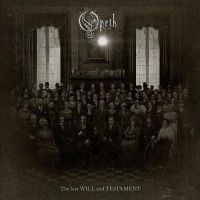

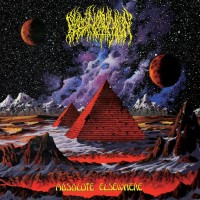







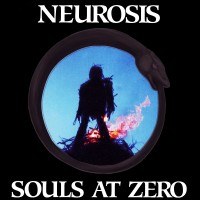




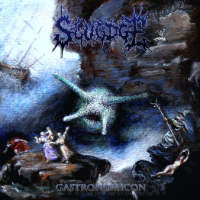


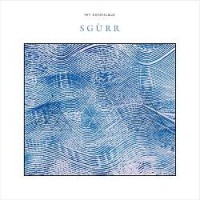
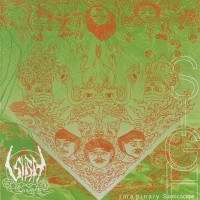
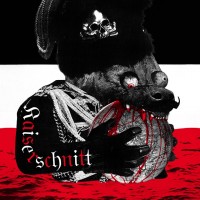
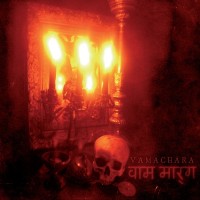

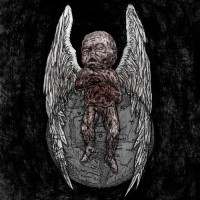



 I can’t wait to see what you find for pt 3
I can’t wait to see what you find for pt 3
